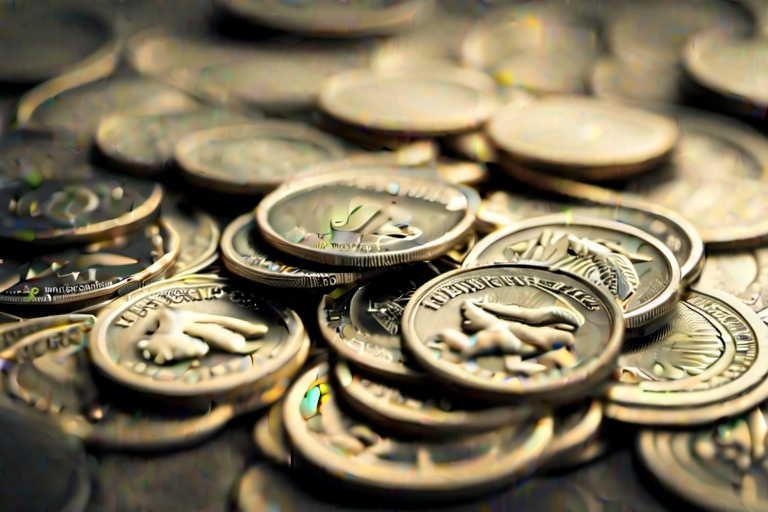Coin collecting is a rewarding pursuit, engaging a diverse and passionate community through the ages. Enthusiasts of numismatics -- the study of currency -- find joy not just in acquiring coins but also in understanding their heritage, significance, and true worth. Whether you are an aficionado or are considering picking up the hobby, a wealth of knowledge awaits you. Let’s embark on an illuminating exploration of the arena of coins, offering insights into the nuances of collecting and valuation.
Coin collecting is a rewarding pursuit, engaging a diverse and passionate community through the ages. Enthusiasts of numismatics -- the study of currency -- find joy not just in acquiring coins but also in understanding their heritage, significance, and true worth. Whether you are an aficionado or are considering picking up the hobby, a wealth of knowledge awaits you. Let’s embark on an illuminating exploration of the arena of coins, offering insights into the nuances of collecting and valuation.
The Basics of Coin Types and Values
Understanding the various coins in circulation and their values is the bedrock of collecting. U.S. coinage primarily consists of four denominations, each with their purpose and value. A penny, the lowest denomination, is worth one cent. The nickel, slightly larger, has a value of five cents. The dime, despite being the smallest, holds a ten-cent value, while the quarter -- the largest of the four – equals twenty-five cents.
But coin recognition extends beyond mere monetary value; each coin exhibits distinct physical characteristics. These traits facilitate identification without needing to rely on visual cues. The dime, for instance, is not just smaller but also the thinnest coin, whereas the nickel is slightly thicker. Furthermore, dimes and quarters share a ridged edge detail, whereas pennies and nickels have smooth edges. These tactile markers enable collectors to distinguish between coins through touch.
Delving into Coin Combinations
A fascinating aspect of coin collecting is exploring the myriad ways to combine currencies to reach a specific value. Consider the number of ways one can assemble coins to total one dollar. You could use one hundred pennies, twenty nickels, ten dimes, or four quarters. Such exercises aren't just academically stimulating; they nurture creativity and an in-depth appreciation for the coins' attributes and their place in a broader monetary system.
The Game of Matching Amounts
Matching amounts is a stimulating activity cherished by collectors. The premise is simple: one participant proposes a monetary amount, and the other must replicate it using a mix of pennies, nickels, dimes, and quarters. This game reinforces understanding of currency value, sharpens mathematical skills, and induces strategic planning, making it an enriching experience for collectors of all levels.
Mastery in Folding Paper Money
Handling coinage is one thing, but mastering the art of managing paper money is equally significant. Developing a method to distinguish banknote denominations by touch streamlines transactions and enhances organization. Collectors might keep one-dollar bills flat, fold five-dollar bills horizontally (akin to a hamburger), and select distinct folds for ten and twenty-dollar bills. Such systematic handling builds efficiency and confidence in daily interactions with currency.
Technological Breakthroughs for Coin Identification
Technological innovation has significantly impacted how collectors and individuals with visual impairments engage with currency. Innovative devices like the Pocket Money Brailler and iBill Talking Banknote Identifier implement braille and auditory cues to assist in bill recognition. Also, apps like the LookTel Money Reader utilize photographic recognition for instant identification. These tools epitomize the evolution of numismatics, rendering the hobby more inclusive and accessible.
Connor McLeod's Campaign for Accessible Currency
The profound influence of coin collecting and advocacy is embodied in the story of Connor McLeod, a young Australian who is visually impaired. His crusade for banknotes with tactile features triumphed, prompting the Reserve Bank of Australia to incorporate such elements into their currency design. This initiative has had a resounding effect, enabling independence and confidence in financial transactions for individuals with visual impairments.
Embracing the Numismatic Journey
Numismatics is not merely a hobby; it's a lens through which we can appreciate the rich tapestry of our history, culture, and economy. Whether you're building a collection or simply relish the satisfaction of a rare find, the world of coin collecting offers immense joy and fulfillment. With understanding of coin values, engagement in challenging activities, and the utilization of cutting-edge identification tools, the hobby remains vibrant and accessible. The journey through the realms of coinage continues to inspire. Embrace the adventure, and enjoy the discoveries that await in the rewarding domain of numismatics.
Information for this article was gathered from the following source.


